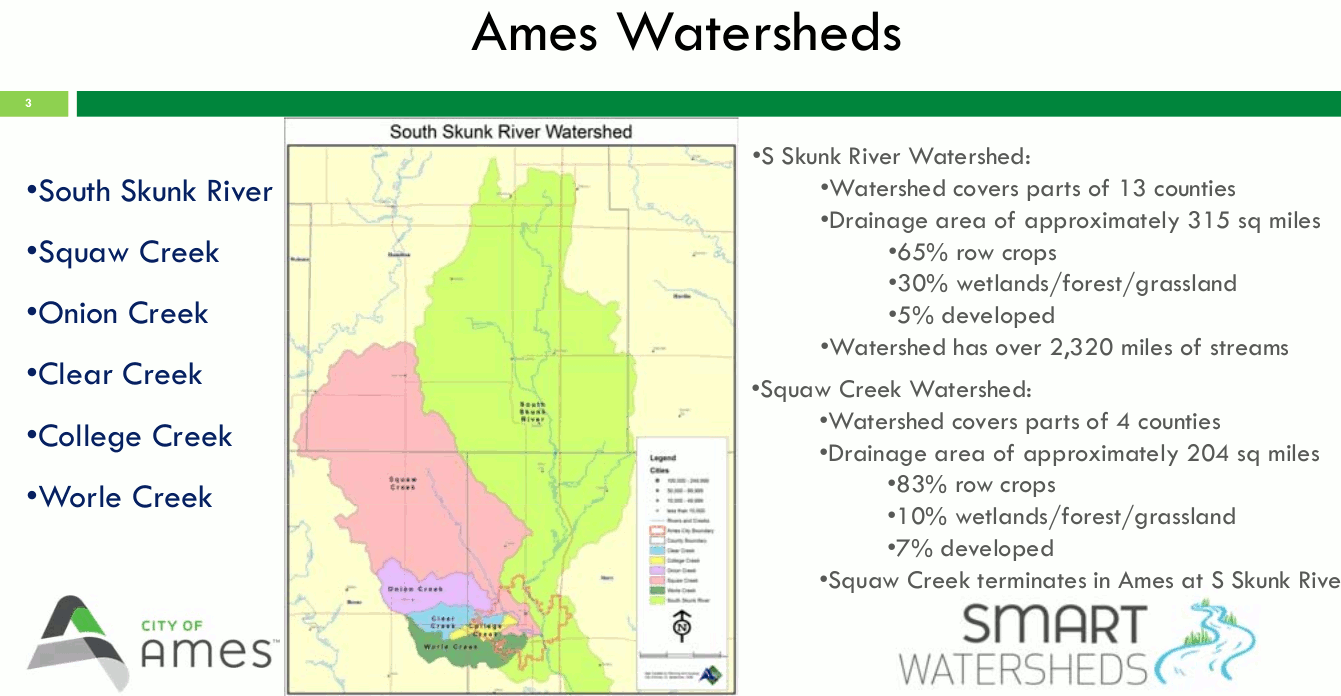Nutrient Reduction and Storm Water Workshop
 |
Bronwyn's Council Preview |
The City Council meeting starts at 6:00 p.m. this Tuesday at city hall. The agenda includes (but is not limited to):
-
1. Storm Water Ordinance Modification.
Council will be reviewing a number of topics related to storm water management, including:-
Parking Lot Maintenance - (rebuilding but not expanding a parking lot)
Staff list several options for how to handle the rebuilding of an existing impervious surface:
-Define it as maintenance, so if the size isn't increased, storm water requirements would not kick in
-Allow the property to address quality standards only, rather than quantity too (would require some improvements, but less area needed)
-Fee-in-Lieu fund, where developers would pay into a fund to be used for storm water projects (watershed improvements, for example)
-Allow an exemption from our parking space requirement, so developers have more pervious ground to work with
-Maintain the current standard, which requires developers to meet storm water requirements when they rebuild an existing lot of the same size. -
Financial Security - It was suggested by developers that Council consider requiring security before occupancy is granted, rather than before plan approval.
-
Runoff Curve Number - Our current standard a runoff curve number of 58. Staff report that 82% of the soil in Story County is reflected in that runoff curve number. The runoff curve number of 58 represents a "meadow in good condition". Staff recommend maintaining this standard, rather than determining the soil type per development site.
-
Inspections - Another suggestion from developers was for inspectors other than licensed plumbers to be allowed as valid.
-
-
2. Nutrient Reduction Strategy Study.
In the coming years, Ames faces the task of nutrient reduction (67% Nitrogen reduction, 75% Phosphorus) at our waste-water plant. The staff report details a study which concluded that our waste-water plant will require upgrading. Some of the current filtration equipment is pushing the end of its lifespan anyway, and newer filtration technology can better remove these nutrients. The cost of improvements at the facility would be spread over 20 years, totaling nearly $40 million. Of the overall nitrogen and phosphorus we need to reduce, only 20% and 5% respectively comes from the waste-water plant, the rest comes from the river upstream. So, in addition to pursuing improvements at the plant, Council will be considering a number of watershed improvements, and how to fund/implement them. (Examples would include buffer strips or wetlands.) Though the study showed watershed practices alone wouldn't be sufficient to meet the DNR nutrient reduction goal, it still recommended pursuing them. Currently the DNR doesn't give credit for such projects towards nutrient reduction, but it is hoped that they might in the future.

Non-Agenda Packet: The following items are requests and communications to the council that are not on the agenda. This includes staff reports and communications/request from constituents/developers. By tradition the council can ask city staff for more information (a report), put the item on a future agenda for discussion or just accept the communication (taking no further action). This usually takes place at the end of the meeting during council comments.
- Human Rights Campaign score card.
Thanks for reading,
Bronwyn Beatty-Hansen
At-Large Council Member